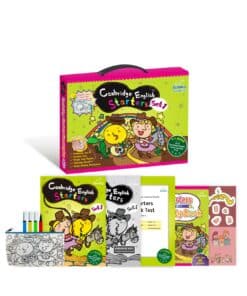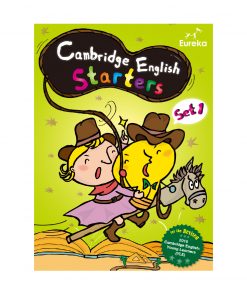Grammar (Context Activities)
| 1. Tenses (1) | 2. Tenses (2) | 3. Articles | ||
| 4. Prepositions of Place and Movement | 5. Prepositions of Time | 6. Imperatives | ||
| 7. Reported Speech | 8. Conditionals |
Tenses (1)
Materials: Storybook or text
Dynamic: Whole class
Procedure:
- Find a storybook or text based on the tense that is being taught or one that has been taught previously (depending on what has been taught).
- Take out a sample, and ask students to read.
- Test comprehension by asking questions relating to the text.
- Pick out some sentences, and ask what tenses they are in and get them to change them to other tenses.
- Texts or stories can also be used with a range of other grammar concepts, such as adverbs and adjectives.
Sample:
Except from: The Pig by Ronald Dahl
In England once there lived a big
And wonderfully clever pig.
To everybody it was plain
That Piggy had a massive brain.
He worked out sums inside his head,
There was no book he hadn’t read.
He knew what made an airplane fly,
He knew how engines worked and why.
He knew all this, but in the end
One question drove him round the bend:
He simply couldn’t puzzle out
What LIFE was really all about.
- Other than hadn’t read, the excerpt is the simple past tense.
- Example task: Ask students to circle the past tenses used.
- As an output could, ask students, how they would change it into the present (or another tense).
In England once there lives a big
And wonderfully clever pig.
To everybody it is plain
That Piggy has a massive brain.
He works out sums inside his head,
There is no book he hasn’t read.
He knows what makes an airplane fly,
He knows how engines work and why.
He knows all this, but in the end
One question drives him round the bend:
He simply cannot puzzle out
What LIFE is really all about.
Tenses (2)
Materials: Song ; Lyrics with blanks
Dynamic: Pairs ; Individuals
Procedure:
- Find a song based on the tense that is being taught or one that has been taught previously (depending on what has been taught).
- Find the lyrics, and rewrite by leaving blanks to relevant parts of the song which has a verb in the focused tense.
- Play the song and just ask students to listen (optional).
- Hand out the lyrics page and see if students can fill in the blanks.
- Elicit answers before playing the song (again) to check if students are correct.
- Test comprehension by asking questions relating to the text.
Sample:
I Still Haven’t Found What I’m Looking For by U2 (mixed tenses but mainly present perfect)
I ____________________ (climb) highest mountains
I ____________________ (run) through the fields
Only to be with you
Only to be with you
I ____________________ (run)
I ____________________ (crawl)
I ____________________ (scale) these city walls
These city walls
Only to be with you
But I still haven’t found what I’m looking for
But I still haven’t found what I’m looking for
I ____________________ (kiss) honey lips
Felt the healing in her fingertips
It’s burning like fire
This burning desire
I ____________________ (speak) with the tongue of angels
I ____________________ (hold) the hand of a devil
It was warm in the night
I was cold as a stone
But I still haven’t found what I’m looking for
But I still haven’t found what I’m looking for
I ____________________ (believe) in the kingdom come
Then all the colours will bleed into one
Bleed into one
Well yes I’m still ____________________ (run)
You ____________________ (break) the bonds and you
Loosed the chains
Carried the cross
Of my shame
Of my shame
You know I believed it
But I still haven’t found what I’m looking for
But I still haven’t found what I’m looking for
But I still haven’t found what I’m looking for
But I still haven’t found what I’m looking for…
Articles
Materials: Storybook or text
Dynamic: Whole class
Procedure:
- Find a storybook or text with a variety of articles in it.
- Take out a sample, and ask students to read and fill in the blanks with the correct articles.
- Elicit answers.
- Test comprehension by asking questions relating to the text.
Sample:
Excerpt from: Winnie-the-Pooh by A.A. Milne
One day when Pooh was out walking, he came to __________ open place in __________ middle of the forest, and in the middle of this place was __________ large oak-tree, and, from __________ top of __________ tree, there came __________ loud buzzing-noise.
Winnie-the-Pooh sat down at the foot of __________ tree, put his head between his paws, and began to think.
First of all he said to himself, ‘That buzzing-noise means something. You don’t get __________ buzzing-noise like that, just buzzing and buzzing, without its meaning something. If there’s a buzzing-noise, somebody’s making a buzzing-noise, and the only reason for making a buzzing-noise that I know of is because you’re __________ bee.’
Then he thought another long time, and said, ‘And the only reason for being a bee that I know of is making honey.’
And then he got up, and said, ‘And __________ only reason for making honey is so as I can eat it.’ So he began to climb the tree. He climbed and he climbed and he climbed, and as he climbed he sang __________ little song to himself.
Prepositions of Place and Movement
Materials: School campus / Theme park / City / Town maps
Dynamic: Whole class
Procedure:
- Find a random school campus map, theme park or town map with buildings or places labelled clearly.
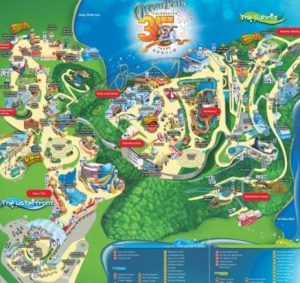
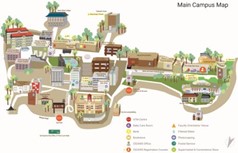
- With these, you can ask students a variety of questions relating to prepositions of place. Questions should start like this: Where is…?
- For prepositions of movement and other directional phrases, you can tell students that they are located here (point to place on map). Someone has asked them for directions to another place on the map. Students should then give the appropriate directions.
Prepositions of Time
Materials: Facts about Festivals
Dynamic: Whole class
Procedure:
- Ask students to talk about their birthdays, starting with the date, month and then year. This will encourage them to think about the different types of prepositions needed.
Teacher: What day is your birthday?
Student: It is on the 13th.
Teacher: Which month is your birthday?
Student: It is in May.
Teacher: What year were you born?
Student: In 2009.
- Then, ask them to brainstorm some festivals they know (e.g. Christmas) and give some sentences to talk about it. These sentences should include a preposition of time (and/or place, etc).
We get presents at Christmas.
I visit my relatives during Chinese New Year.
Halloween is on 31st of October.
- Alternatively, can find some newspaper articles or encyclopedia pages regarding festivals or events, and get students to find the prepositions.
- You may also find some signs which could be find all around town and for students to talk about them using prepositions and ask questions about them.
When does the bank open today?
What time is the Magic Festival?
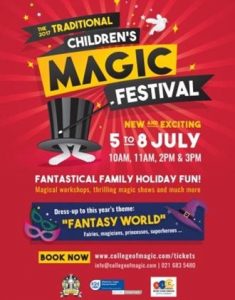

Imperatives
Materials: Recipes or instructions
Dynamic: Whole class
Procedure:
- Find some recipes or instructions to do something (e.g. How to play chess).
- Get students to find the imperative verbs.
- See if they understand what the imperatives are telling them to do.
- Then, provide some pictures of some actions and ask students to make sentences using the imperative. These can be individual pictures or a series of pictures which teaches you one thing.
- Make sure sentences apply to the pictures.
Sample:
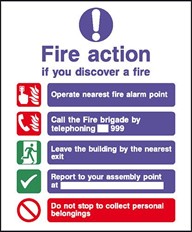




Turn off the light. Brush your teeth. Do your homework.
Reported Speech
Materials: Storybook
Dynamic: Whole class
Procedure:
- Find a storybook which includes direct speech.
- Take out a sample, and ask students to read.
- Test comprehension by asking questions relating to the text.
- Pick out some of the directed speech parts from the text and ask students if they can tell you whether it is in direct speech or reported speech.
- Then ask students to rewrite the direct speech from the text into reported speech.
- Ask students to imagine themselves as if they were in the story and are now reporting back home what was said.
Sample:
Excerpt from: Winne-the-Pooh by A. A. Milne (Chapter 3 – In which Pooh and Piglet go hunting and nearly catch a wozzle)
One fine winter’s day when Piglet was brushing away the snow in front of his house, he happened to look up, and there was Winnie-the-Pooh. Pooh was walking round and round in a circle, thinking of something else, and when Piglet called to him, he just went on walking.
“Hallo!” said Piglet, “what are you doing?”
“Hunting,” said Pooh.
“Hunting what?”
“Tracking something,” said Winnie-the-Pooh very mysteriously.
“Tracking what?” said Piglet, coming closer
“That’s just what I ask myself. I ask myself, What?”
“What do you think you’ll answer?”
“I shall have to wait until I catch up with it,” said Winnie-the-Pooh.
“Now, look there.” He pointed to the ground in front of him. “What do you see there?”
“Tracks,” said Piglet. “Paw-marks.” He gave a little squeak of excitement. “Oh, Pooh! Do you think it’s a—a—a Woozle?”
“It may be,” said Pooh. “Sometimes it is, and sometimes it isn’t. You never can tell with paw-marks.” With these few words he went on tracking, and Piglet, after watching him for a minute or two, ran after him. Winnie-the-Pooh had come to a sudden stop, and was bending over the tracks in a puzzled sort of way.
“What’s the matter?” asked Piglet.
- As parts don’t actually specify who says what, see if students can decipher it from the context. This is also an excellent way to inform them that usually every time a new speaker says something; it should start a new paragraph. Therefore, based on context, students should understand that the conversation is just between Piglet and Winnie. Thus, if Pooh’s speech is on one line, and there is another speech on the next line with no indication who said it (such as ‘Piglet said’), we can assume it is Piglet.
- Pick out some direct speech from the text and ask students to turn it into reported speech. You may use the following example to show students what to do:
Direct: “Hallo!” said “Piglet, “what are you doing?”
Piglet said hallo and asked Pooh what he was doing.
(“Hallo” is the alternative way to say Hello, but not as common)
Conditionals
Materials: Songs ; Lyrics (If I were a boy, …)
Dynamic: Whole class
Procedure:
- Direct students to the song lyrics.
- By mentioning the song name and singer, ask students if they have heard either of them.
- Play the song once and get them to follow the lyrics.
- After playing the song once, ask students their thoughts on the song and if they understand it.
- Explain that the song includes a type of conditional sentence. See if they can tell you which and give reasons why (second conditional).
- Using the structure: If I were a boy/girl, I would …., get students to think up their own ideas, or to think about what they would do if they were the opposite sex.





